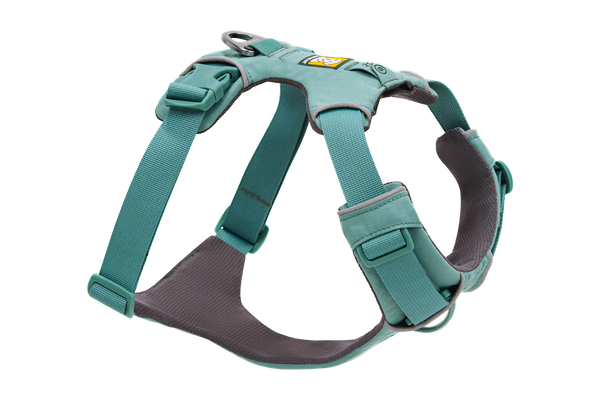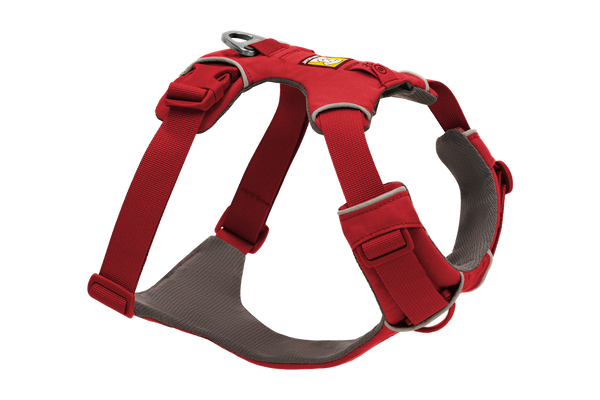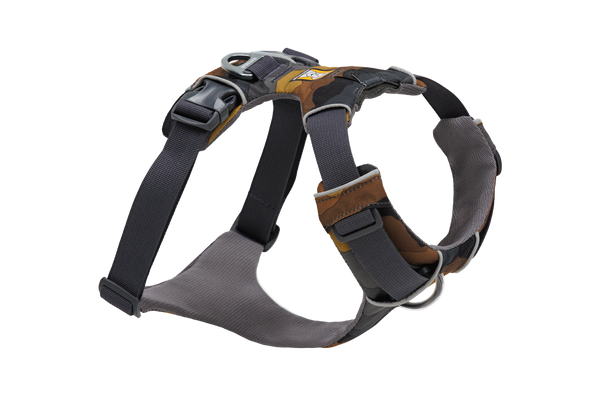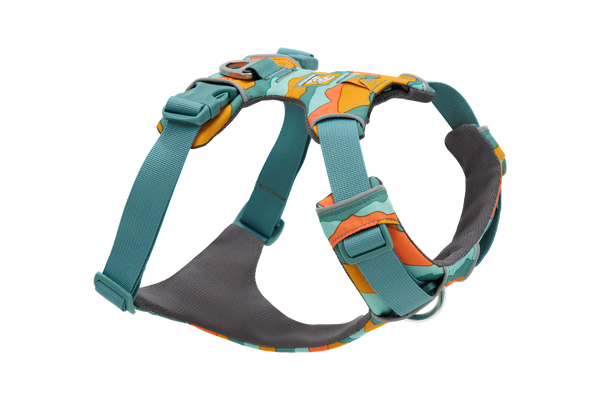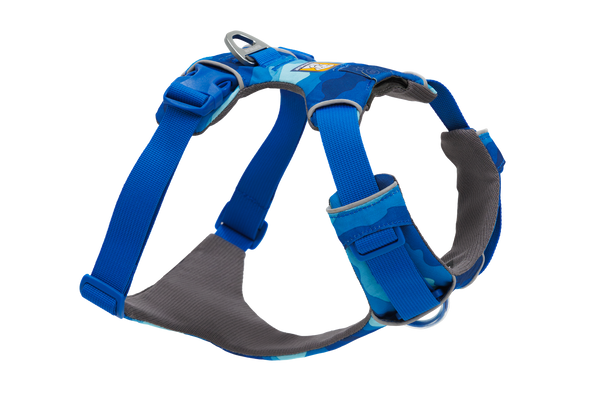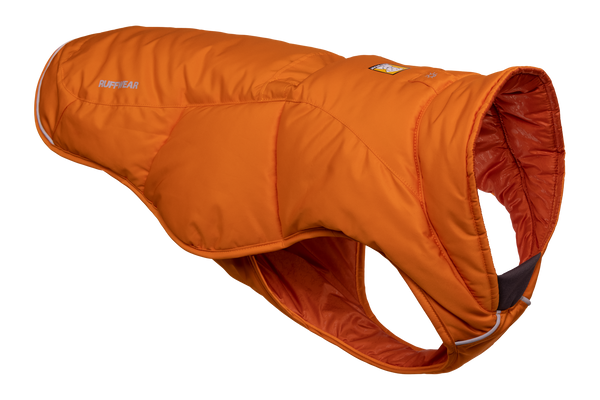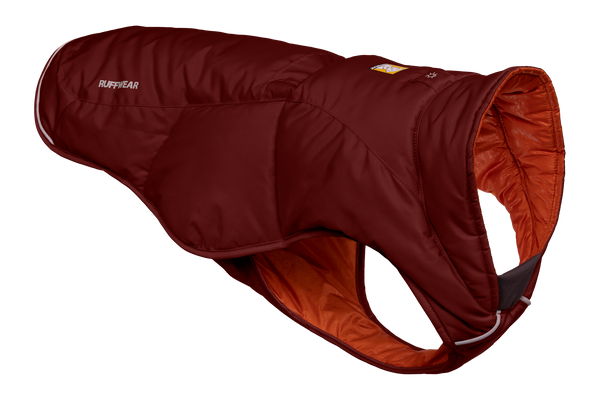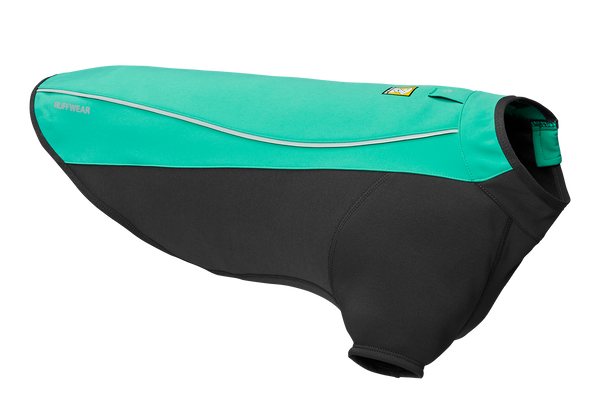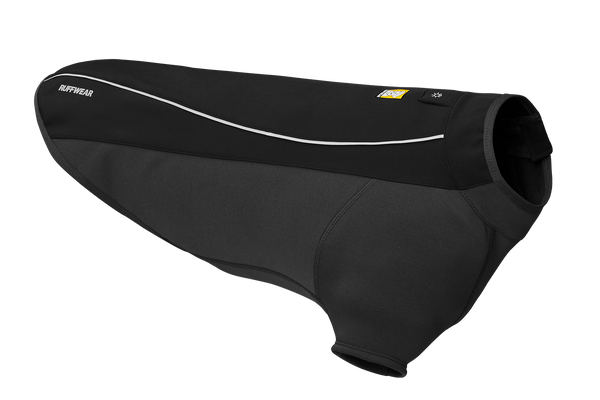HOW TO: DIY A Dog Crate End Table
Hi! Sturgill and Kadee here. I’m Sturgill’s human and a Product Innovation & Engineering Developer at Ruffwear. Sturgill entered my life in October 2021 as a 3.5 year old rehome from a family that wanted to give him a better life. Since adopting Sturgill, I have been crate training him and working with him to create safe spaces in our house to reduce his anxiety. We use his crate for a place to settle, wait for his food and to sleep in. Sturgill sleeps best in his crate when it is covered, and in a corner.

The top of his crate is used to store his toys, apparel, and gear - and inevitably other items like plants, books, and treats. I wanted him to feel safe in his enclosed space while also giving his humans a usable surface that looks nice in our house.
Keeping it simple, I stuck to a budget of around $100 by using tools I already owned and up-cycling materials, when possible. Check out my step-by-step instructions of how to make your own crate below.
How To Build It: Step By Step
Here is my materials list. All items except the up-cycled cabinet doors (purchased at ReStore) can be purchased from your local hardware store. I started with a 36”L x 22.5” W x 24”H wire dog crate, but you can adjust the measurements for a larger or smaller crate.
- (1) 36” wire double-door dog crate - Dimensions: 36" L x 22.5" Wx 24" H
- (2) Upcycled cabinet doors (mine were 37"x17.75", 38" length is ideal, +2" from crate size) **Purchased for $8 total at Habitat for Humanity Restore
- (4) Hobby Board/Apron board slats 3"x0.5"x36" (+0" of crate length)
- (4) Hobby Board legs 1.5"x1.5"x30" (+2" of crate height)
- (1) Flat Straight Brace
- (24) ¾" Corner Braces
- (60) #6 x ½" wood screws
- Felt pads for table feet
- Howard Butcher Block Conditioning Wax - food grade for dogs
Tools:
- Measuring tape
- Speed Square
- Skill Saw
- Sander (or a piece of fine sandpaper)
- Drill & 8/32 drill bit
- (2) Saw horses
- Phillips screwdriver/drill
- Wood Glue and filler for the cabinets

Let’s Get Building!
Step 1: Measure. Measure again.
The measuring tape will be your best friend. Even though I measured everything multiple times, I was still surprised by the apron not fitting on the rear legs of the table because my cabinet doors came an inch shorter than my initial plan.
Step 2: Create the table top Using the skill saw, cut cabinet doors from the edges that you want to join together. At 17 ¾" each, I needed to cut off 4 ½" from each cabinet to be 26 ½” across.
(For your crate, make the table top +4" crate width and +2" crate length)
- Sand the cut edges
- With the top side down, line up freshly cut and sanded edges. Place scrap wood (mine was the piece I cut off) along the center line with an inch or two overlapping each side.
- Check that the screws are shorter than the thickness of 2 cabinet doors.
- Drill pilot holes with 8/32nd drill bit and screw on the scrap wood to the bottom side to secure the two cabinet doors together.

Step 3: Cut the table legs
- Measure and mark hobby board legs at 26" (+2" to crate height) **Check there is enough space for the crate door to open when the apron is on. Use speed square to ensure a square cut.
- Cut straight across with a skill saw. It's easiest to cut all at once by clamping four together.
Step 4: Cut the apron boards
What is an apron board? An apron board is a horizontal structure that provides additional support for the table legs

- Measure boards for apron.
- (2qty) 36" long for sides (+0" to crate length)
- (2qty) 23" long for front and back (+0.5" to crate width)
- My cabinet doors were too short to have an apron on the back, so I only ended up with a front apron.
- Sand Boards to remove any splinters or unevenness.
Step 5: Secure apron to table legs
- Line up ¾" corner braces on the apron boards and on leg with ~¼" of the leg exposed on the outside. The edge of the table leg aligns with the edge of the brace.
- Mark the hole location with a pencil or sharpie, and drill a pilot hole for each screw.
- Use #6 ½" wood screws in each hole.
- Offset the braces for each leg so the screws don’t hit on opposing sides. Align edge of brace on inside edge of leg.

Step 6: Secure to table top
- Center legs and apron on table top
- Place ¾" corner brace on the inside of the front apron lined up with your visual preference. (Mine was ~1" form the edge of the table)
- Mark with pen
- Drill pilot hole part way in (don’t go the entire way through table top!)
- Screw in #6 wood screw to each hole
Step 6.5 Option: Extra support
Since the apron didn’t fit on the back side of the table with the crate underneath, I left the back apron panel off and added a straight metal brace.
Step 7: Fill gap in cabinet seam
- Add wood filler to seam on top of table and let dry
- Sand/smooth out wood filler
Step 8: Condition the surface
- Use butcher block conditioner on the entirety of the surface.
- Select a rag that you can use regularly to condition the wood.
Step 9: Stick table on top of crate

FINAL STEP: Welcome your dog into their remodeled abode!
Once complete, you can add your own flair. I added a simple shelf on top to hold a few books and plants. This serves as an end table for our couch.
Takeaways:
- Stop by a thrift store or local Restore first to see what you can find to up-cycle.
- Get the rest of your supplies at your local hardware store - many stores will cut to your dimensions if you ask.
- Getting the support I needed for the two cabinet doors to form the table top was my biggest challenge. In retrospect, a beam across the middle perpendicular to the doors would have been a great solution, or a few straight braces.
- Corner braces: You can choose from several different options to either have a stronger brace, or use fewer braces - however it will change how you layout your apron and legs.

Remember, it doesn’t have to be perfect. Having a friend to help hold things, measure, cut, drill and bounce ideas off is incredibly helpful. A huge thank you to Kristen & Emma Bean for spending your Saturday working on this with me and to Kami for the inspiration on this project and shopping for supplies!
I love having Sturgill’s crate integrated into our home and sometimes I think it is more for me, than for him…



